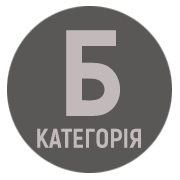Lexical-semantic signs of expressively colored vocabulary in the informal speech of IT specialists (based on the material of the DOU.ua online resource)
DOI:
https://doi.org/10.32782/2617-3921.2023.24.124-132Keywords:
positive emotion, negative emotion, positive emotional-evaluative vocabulary, negative emotional-evaluative vocabulary, forum, professional discourse, quantitative analysis.Abstract
The article is devoted to the problem of verbalization of emotions in professional discourse. The object of the study is the expressively colored vocabulary used in the informal communication of IT specialists. Its lexical-semantic features became the subject of the study. 100 examples obtained from the website DOU.ua served as research material. In scientific research, forums are characterized as popular platforms for people's network communication, the features and important components of informal communication of specialists in a certain field are indicated. To carry out the research, the available classifications of emotionally colored vocabulary were also analyzed, the criteria for its division into groups were outlined, and its characteristic features were indicated. The studied vocabulary was divided according to V. Chabanenko's classification of emotionally colored vocabulary into two groups: 1) units that denote specific experiences and emotions; 2) lexical units in the meaning of which there is an emotional and evaluative component. Each of the isolated groups was subject to further division, as well as qualitative and quantitative analysis according to the specifics of their presentation of emotions. Thus, in the first group, units for negative and positive emotions are distinguished. It is stated that lexemes which verbalize positive emotions quantitatively dominate in analyzed examples over lexemes reflecting negative ones. Meanwhile the palette of emotions of the first subgroup is less sufficient than the second one. In the second group, respectively, units with positive and negative emotional and evaluative value are singled out. Quantitative superiority of lexemes with a negative emotional and evaluative value over lexemes with a positive emotive and evaluative value was established. An attempt was made to explain the reasons for such a quantitative distribution of the researched illustrative material by groups and subgroups.
References
Вавринюк Т. І. Емоційно-експресивна лексика в поетичному мовленні (на матеріалі творів Ліни Костенко). Філологічні студії. Науковий вісник Криворізького державного педагогічного університету. 2010. Вип. 4. С. 67–73.
Ідзьо М. В. Мовні засоби експресивізації в текстах сучасних польських ЗМІ : дис… канд. філол. наук: 10.02.03 / Інститут мовознавства ім. О. О. Потебні. Київ, 2016. 222 c.
Чабаненко В. А. Стилістика експресивних засобів української мови : монографія. Запоріжжя : ЗДУ, 2002. 351 с.
Чабаненко В. А. Основи мовної експресії. Київ : Вища школа, 1984. 176 с.
Чайковська Є. Ю. Поняття «емотивність» та «експресивність в мові науки. Лінгвістика ХХІ століття : нові дослідження і перспективи. 2012. С. 279–287.
Lüdtke U. M. Emotion und Sprache: Neurowissenschaftliche und linguistische Relationen. URL : www.reha.hu-berlin.de/sprach/sonstiges/ SHA_Emotionen.pdf (дата звернення 22.08.2023).
Scherer K.R. Theorien und aktuelle Probleme der Emotionspsychologie. Enzyklopädie der Psychologie: Psychologie der Emotionen. Göttingen, Toronto, Zürich. 1990. S. 1–38.
Форум програмістів DOU. URL : https://dou.ua/forums/



